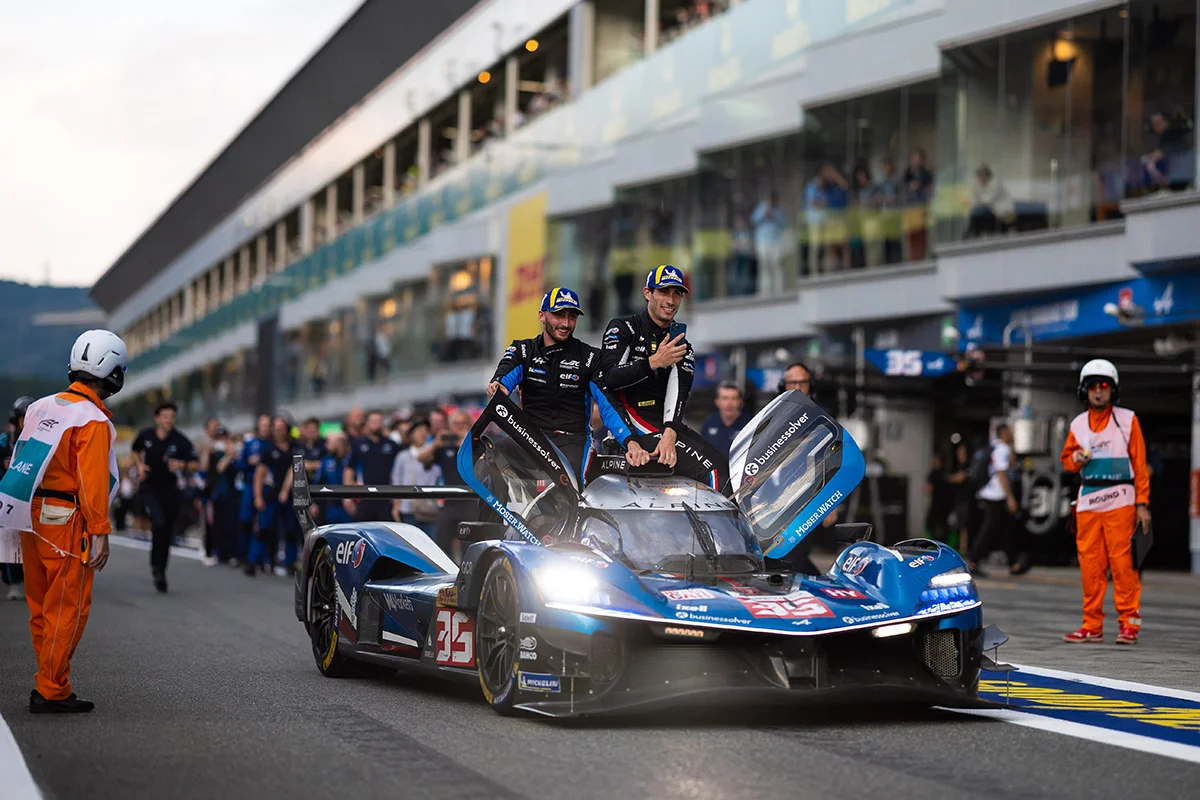Toyota is set to introduce the first significant update to its GR010 HYBRID Le Mans Hypercar since its 2021 debut, aiming to compete strongly in the 2026 World Endurance Championship (WEC) season. The Japanese manufacturer is focusing this major revision on aerodynamic enhancements to regain a winning edge, especially at the Le Mans 24 Hours.
Kazuki Nakajima Details the Upcoming Aerodynamic Package
Kazuki Nakajima, vice-chairman of Toyota Gazoo Racing Europe and former driver, announced the planned upgrade during a press briefing with the Japanese automotive media following the recent Fuji WEC race. He explained that the development targets aerodynamic improvements designed to boost the car’s competitiveness.
“We’re actively working to introduce a new package for next year,”
said Nakajima, who transitioned into management after retiring from driving in 2021.
“We plan to start testing the evolved car with this new aerodynamic package in early October.”
The upgrade aims to address performance gaps seen in recent races, with the team intent on reclaiming victory at Le Mans.
Le Mans Performance Challenges Spark Development Drive
Toyota’s GR010 HYBRID has struggled since its last French endurance triumph in 2022, finishing no higher than fifth place this year. Nakajima highlighted the shortcomings in outright speed at Le Mans that impacted their results.
“At Le Mans, we were slower than our rivals in terms of top speed,”
he admitted, underscoring the need for improvements within the existing regulations.
“This race made us keenly aware that, even within the rules, there is much more we can do in these areas.

The entire team is united in our determination to absolutely win next year’s Le Mans, and we’re currently preparing for that.”
Team Principal Kamui Kobayashi Emphasizes Need for Raw Speed
Kamui Kobayashi, Toyota’s lead driver and WEC team principal, shared insights on the upgrade priorities after Fuji. He stressed the importance of resolving ongoing issues to develop an exceptionally fast car capable of competing under the Balance of Performance (BoP) constraints.
“We need to clear the problems we’ve been having and build a car that’s crazy fast, and then have it adjusted by the Balance of Performance,”
Kobayashi stated.
He added that this strategy involves crafting a vehicle so quick it can still prevail even with the BoP’s maximum weight and minimum power handicaps.
“So fast it is capable of winning even when given the maximum weight and minimum power by the BoP.”
Current Season’s Struggles Linked to Balance of Performance Limits
Toyota’s 2025 WEC campaign has been hampered by the BoP regulations, which limit power output and impose weight minimums on competitors. The GR010 has operated close to the minimum power threshold of 480 kW (643 bhp) and near the maximum weight of 1100 kg, sharing this status with Ferrari among the Hypercar contenders.
During the Fuji race, Toyota ran at 483 kW and 1069 kg, positioning the car at a performance disadvantage. The first test of the updated GR010 is expected at Paul Ricard in early October, marking the beginning of the implementation phase for these upgrades.
Development Follows of Evo Joker Regulations and Homologation Testing
The mid-cycle improvements are being made under the evo joker rules applicable to both LMH and LMDh cars in the Hypercar class. These upgrades require approval from the FIA and the Automobile Club de l’Ouest, which oversee the WEC regulations.
Toyota had no updates allowed for the 2025 season, despite winning the manufacturers’ championship and three races in 2024. The new aerodynamic changes will coincide with homologation tests conducted at the Windshear windtunnel facility in North Carolina, after the closure of the Sauber windtunnel previously used for LMH homologation.
Past Evolution of the GR010 HYBRID and Ongoing Joker Usage
The GR010 had previously undergone performance tweaks during its second and third seasons in 2022 and 2023. The 2022 changes focused primarily on tire sizing modifications required by evolving LMH regulations, switching from equal front and rear tires to narrower fronts and wider rears. Toyota argued these changes did not count as evo jokers since they were imposed to align LMH rules with the LMDh category introduced in 2023.
Toyota, like most other manufacturers, has not publicly disclosed how many joker upgrades have been used. The regulations permit a total of seven joker evolutions until the current Hypercar cars complete homologation in 2029.
Looking Ahead: Strategic Importance of the 2026 Update
This upcoming Hypercar upgrade represents a crucial step for Toyota Gazoo Racing as it seeks to overcome rivals and adapt within the tightly regulated BoP framework. With Le Mans always the pivotal event for endurance racing manufacturers, the aerodynamic enhancements and ongoing testing program will be decisive for Toyota’s chances of reclaiming the top spot.
Success in the 2026 WEC season will depend heavily on the effectiveness of this aerodynamic package, the ability to optimize performance under BoP limitations, and continued adaptation to evolving regulations, all spearheaded by key figures such as Kazuki Nakajima and Kamui Kobayashi. The developments at Paul Ricard and beyond will be closely watched by fans and competitors alike.
